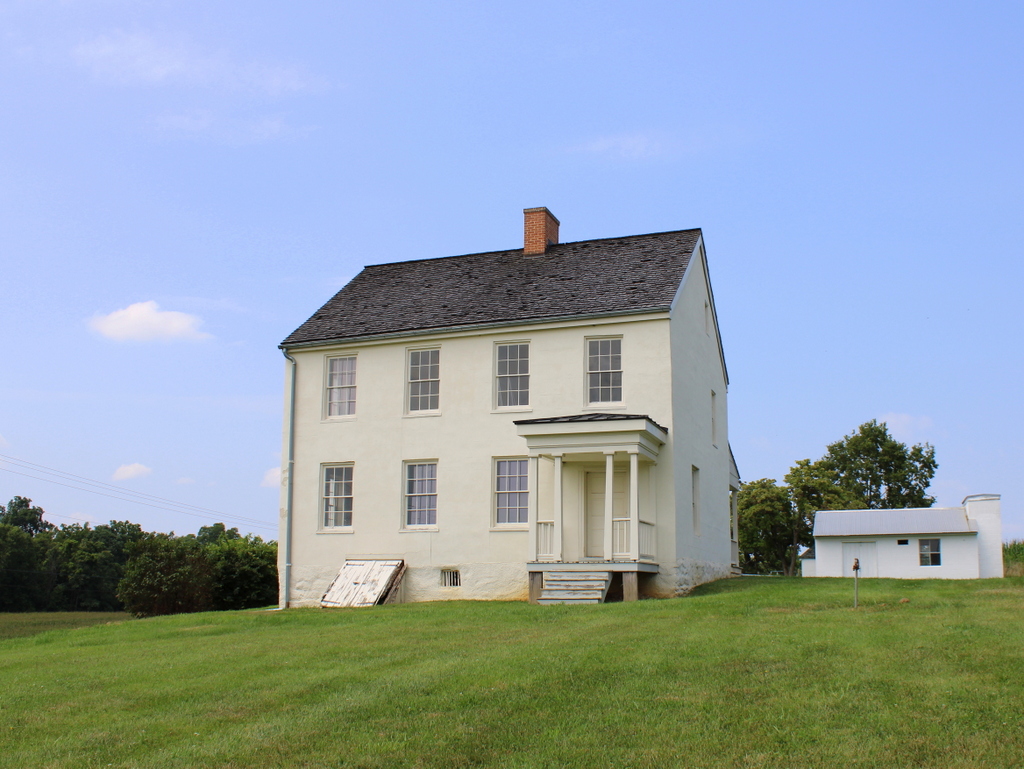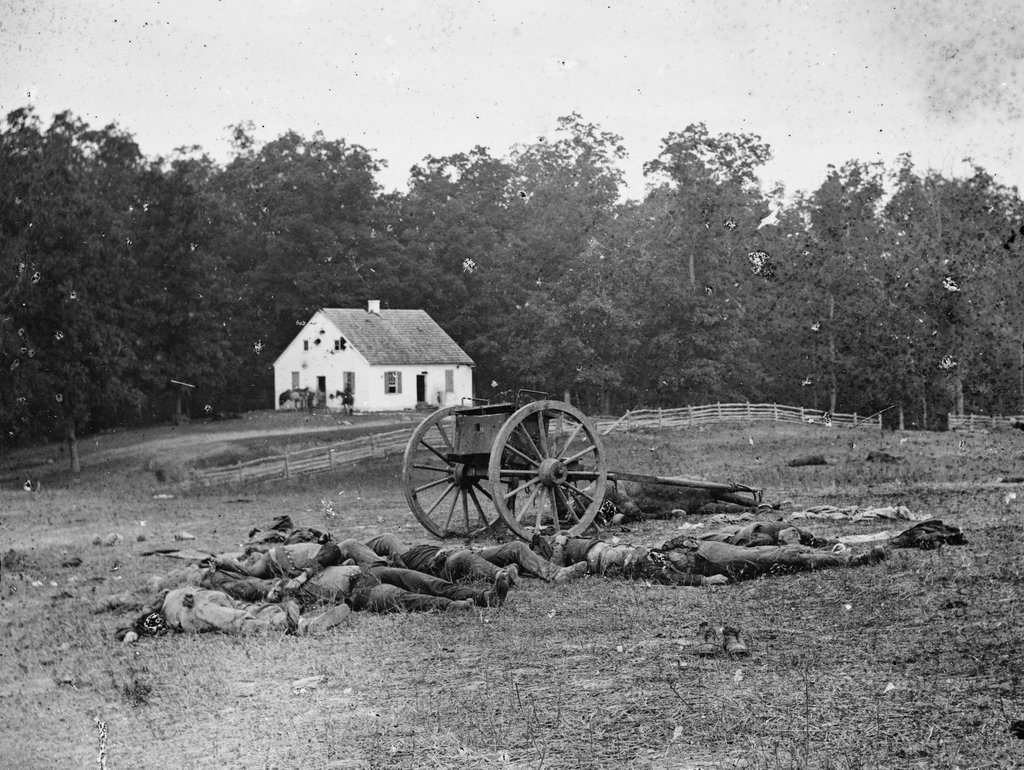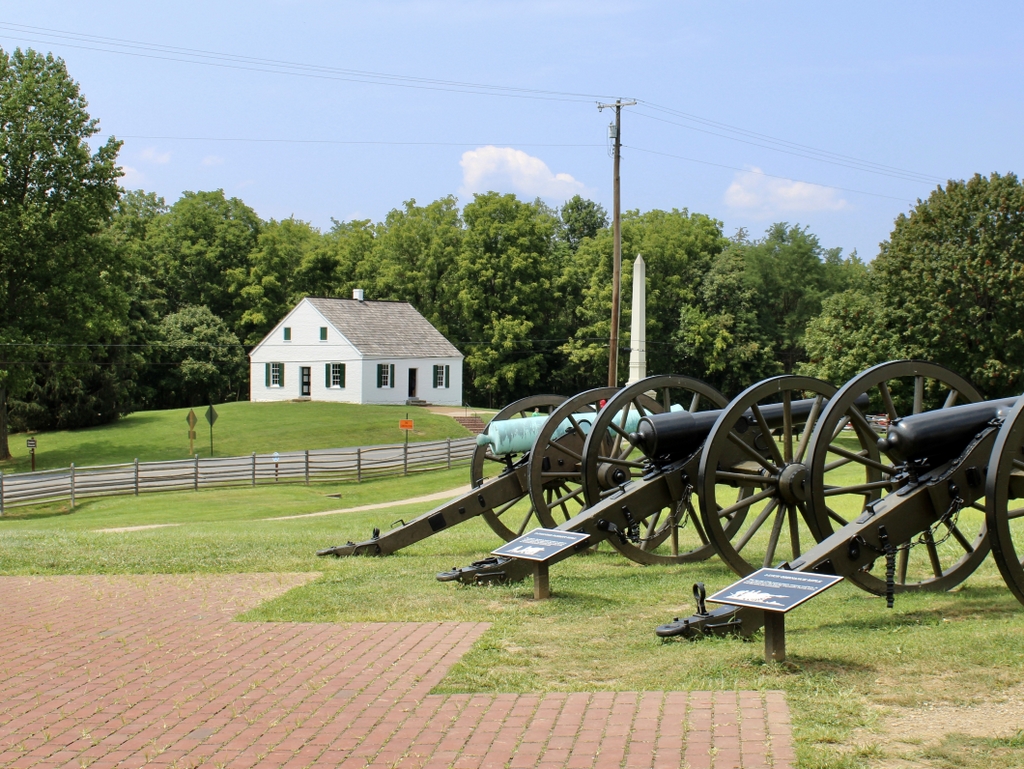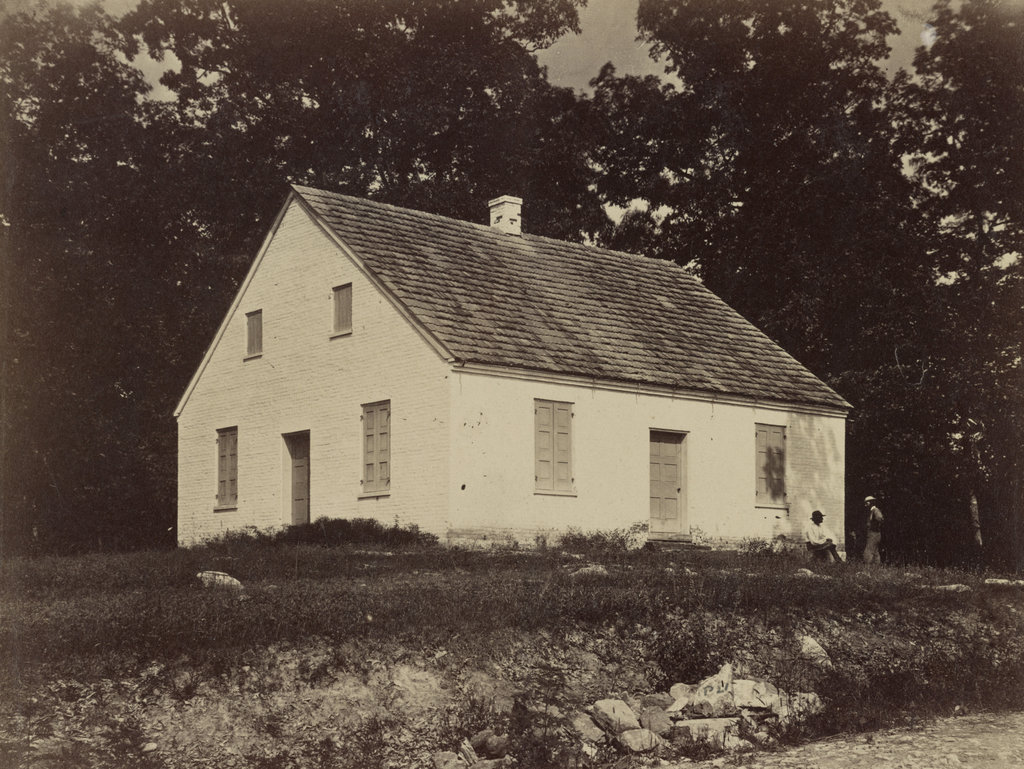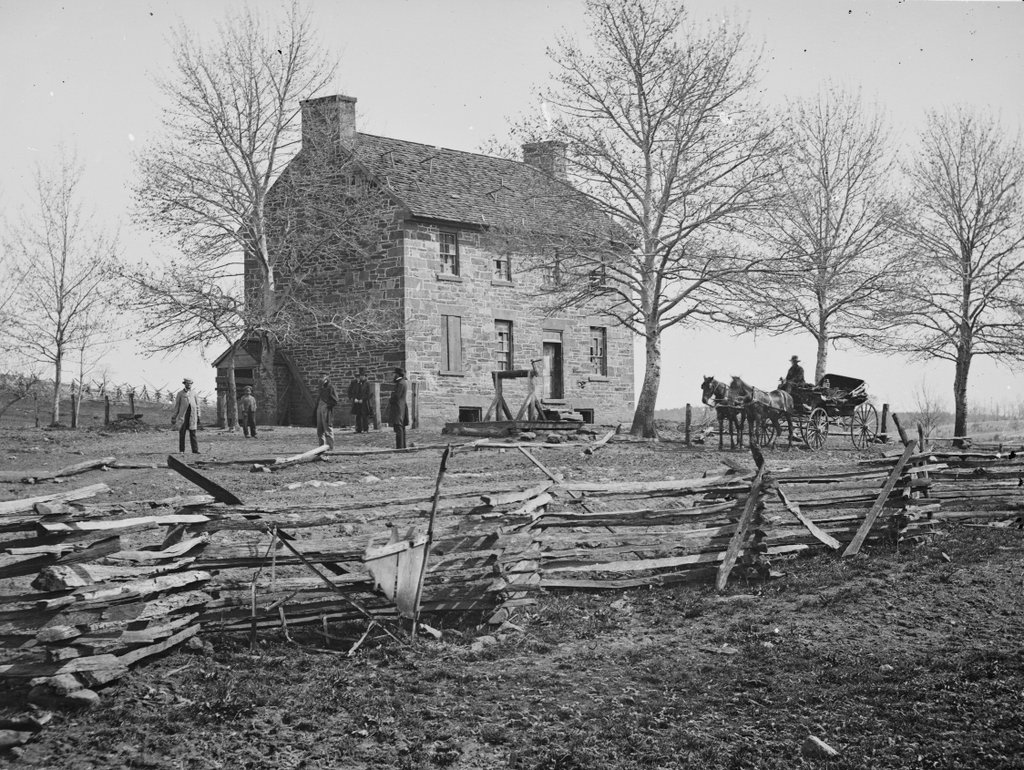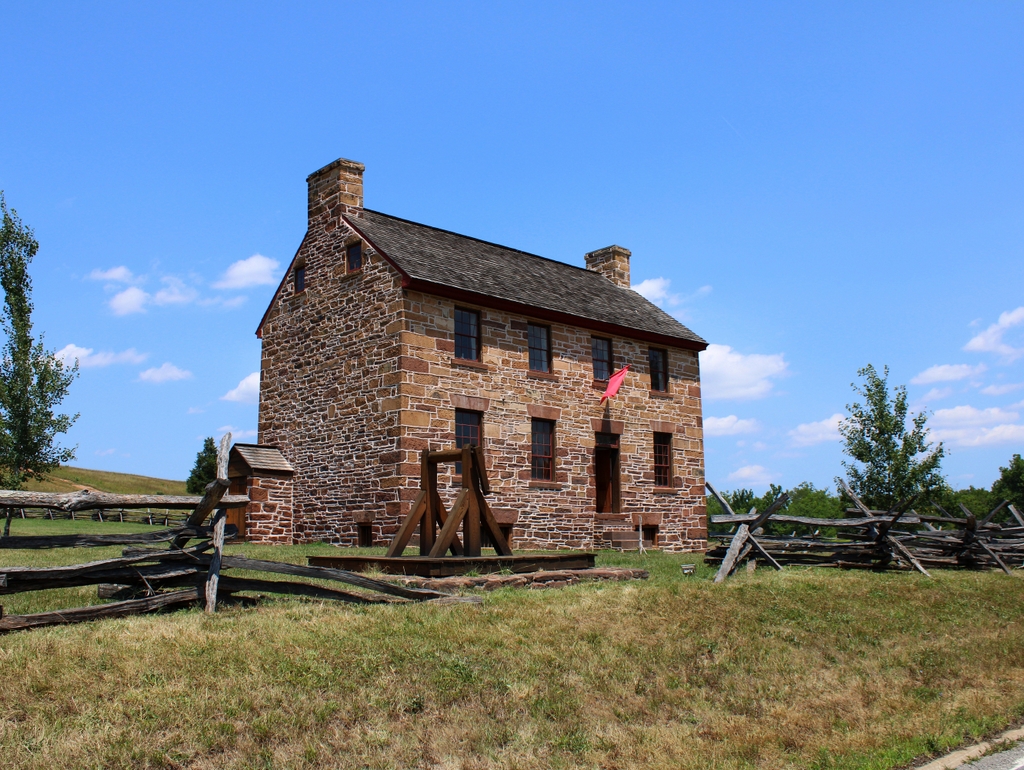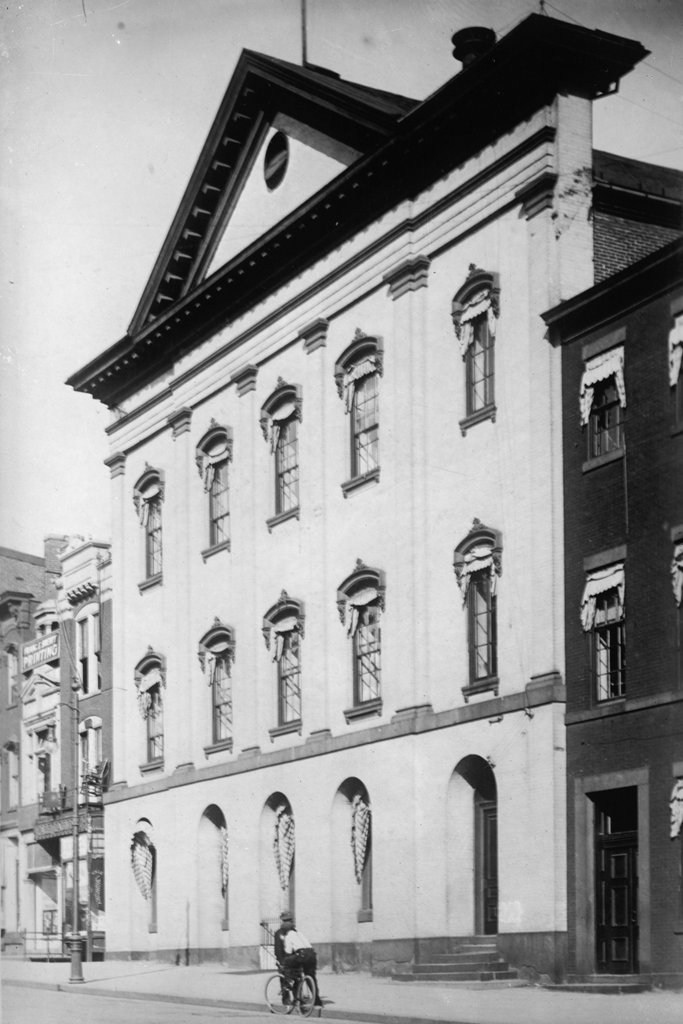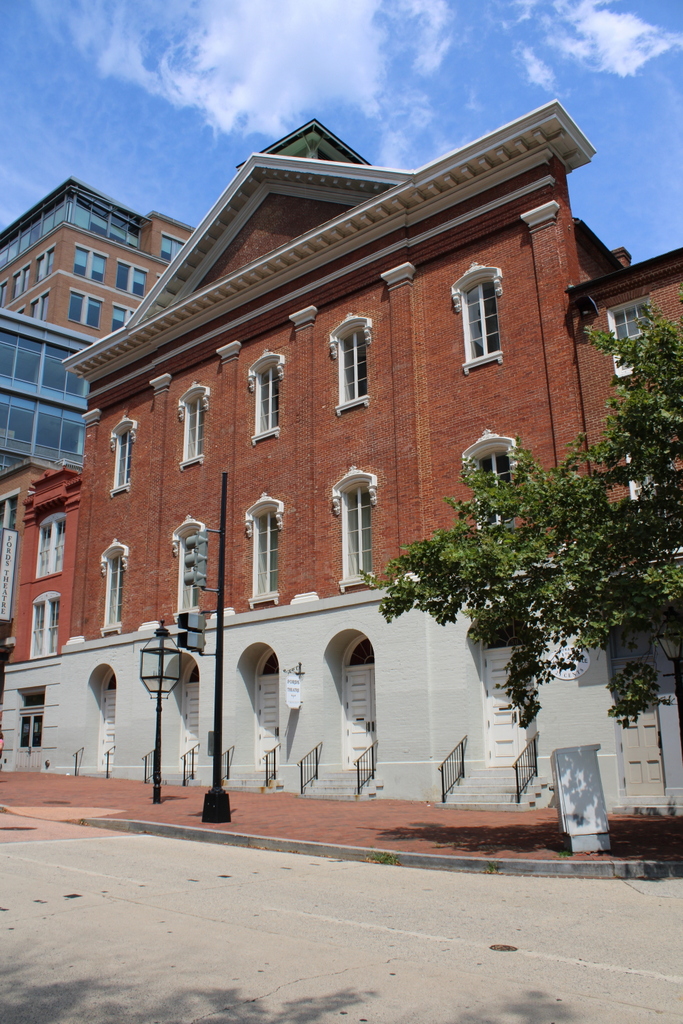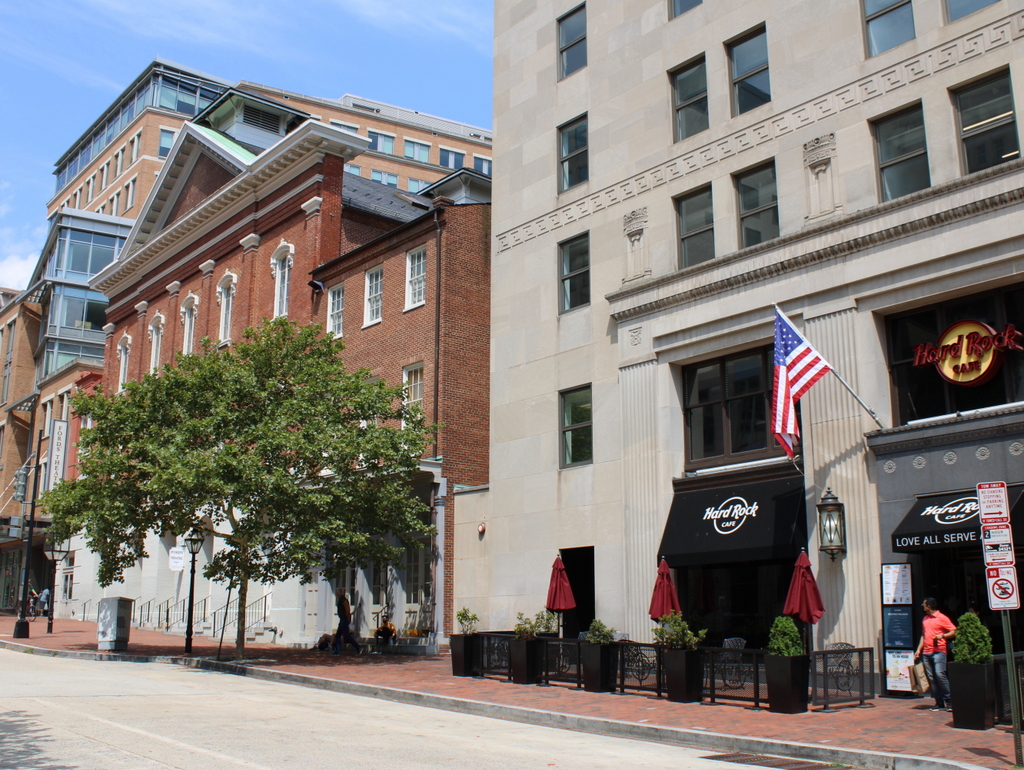The Miller farmhouse in Sharpsburg, in the aftermath of the Battle of Antietam in 1862. Image courtesy of the Library of Congress, Civil War Glass Negatives and Related Prints collection.
The scene in 2021:
These two photos show the farmhouse of David R. Miller, which stands as a major landmark on the Antietam battlefield. This house was near the epicenter of some of the most intense fighting during the deadliest single-day battle in American history, yet it survived remarkably unscathed, as shown in the first photo shortly after the end of the battle.
The house was apparently built around 1800, and it was purchased by John Miller in 1844. His son David subsequently lived here, with the 1860 census showing him here with his wife Margaret and seven children. From oldest to youngest, they were: William, age 13; Harriett, age 12; Mary, age 11; Eleanor, age 10; James, age 8; Nettie, age 3; and Clarence, age 3 months. According to the slave schedules of the 1860 census, the Miller family also lived here with a 20-year-old enslaved woman.
Miller’s occupation on the census was listed as a farmer, and he owned a considerable amount of property, amounting to $13,500 in real estate and $1,200 in his personal estate. Aside from the house itself, there were a number of outbuildings here on the property, including a barn, a blacksmith shop, and a separate kitchen. In total, his property consisted of about 200 acres of farmland and woodlands, extending along both sides of the Hagerstown Pike as far south as the Dunker Church.
At the time of the census, Miller was just another rural farmer in western Maryland, but within a few years his property would achieve national attention for the bloody fighting that occurred here during the Battle of Antietam on September 17, 1862. In the process, the descriptive names of locations on his property, like the West Woods and the Cornfield would become etched into the annals of the Civil War.
The Battle of Antietam occurred as a result of Confederate General Robert E. Lee’s first attempt to invade northern territory. Following victories in Virginia in the summer of 1862, he moved his army across the Potomac and into Maryland, where he hoped to weaken northern morale and their will to fight. He fought several smaller battles, and then took up a defensive position here in the vicinity of Sharpsburg, just a little to the south of Miller’s farm.
The fighting began in the early morning hours of September 17. By this point, the Miller family had abandoned their home to seek refuge in Sharpsburg, and Union soldiers marched through the property in an attempt to attack the left flank of the Confederate line. In the process, though, they met resistance in the Miller cornfield, located just to the south of the house. Over the next few hours, the two sides would go back and forth in the cornfield, alternately gaining and losing ground, without any side making much progress.
With the cornfield becoming a stalemate, Union General Edwin Sumner attempted to flank the Confederates by moving into the West Woods. This was also part of Miller’s property, and it was located to the west of the cornfield on the other side of the Hagerstown Pike. However, as was the case in the cornfield, they faced heavy resistance in the West Woods and suffered massive casualties. Out of a force of about 5,300 men, around 2,200 were killed or wounded in just 20 minutes of fighting there. This, combined with around 8,000 killed or wounded in the cornfield, meant that Miller’s property accounted for a significant portion of the loss of life that occurred during the battle.
Over the course of the day, the fighting eventually shifted further to the south, away from Miller’s property. What remained was a scene of devastation that was perhaps best described by Union General Joseph Hooker, who later wrote:
Every stalk of corn in the northern and greater part of the field was cut as closely as could have been done with a knife, and the slain lay in rows precisely as they stood in their ranks a few moments before. It was never my fortune to witness a more bloody, dismal battle-field.
Oddly enough, however, despite being immediately to the north of this cornfield, the Miller house managed to survive the battle with minimal damage. Unlike most other photos that were taken in the immediate aftermath of the Battle of Antietam, the first photo here shows hardly any signs of the fighting that had occurred around the house. Without any other context, it would appear to be a typical 19th century photograph of a farmhouse, complete with the family posing on the front porch. Although not identified in the caption of the photograph, the five people on the porch are likely the Miller children. There is also a sixth person in the photo, seated on a stump on the far left, but this figure is too blurry to identify.
The Miller family would continue to live here for many years after the battle, before ultimately selling the property to Euromus Hoffman in the mid-1880s. The federal government established the Antietam National Battlefield Site in 1890, but it did not initially include the Miller property, which remained in private hands for the next century. Finally, in 1989 it was purchased by the Conservation Fund, and a year later it was donated to the National Park Service.
The house underwent a major restoration starting in 2008, and it has since been returned to its 1862 appearance, as shown in the present-day photo. The grounds look very different from the first photo, with very little vegetation, but overall the house looks very much the same as it did in the aftermath of the battle, and it stands as an important landmark here on the Antietam battlefield.


